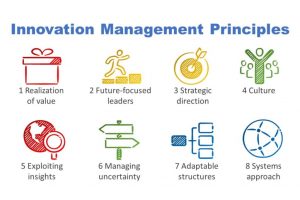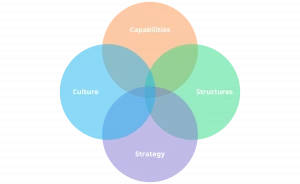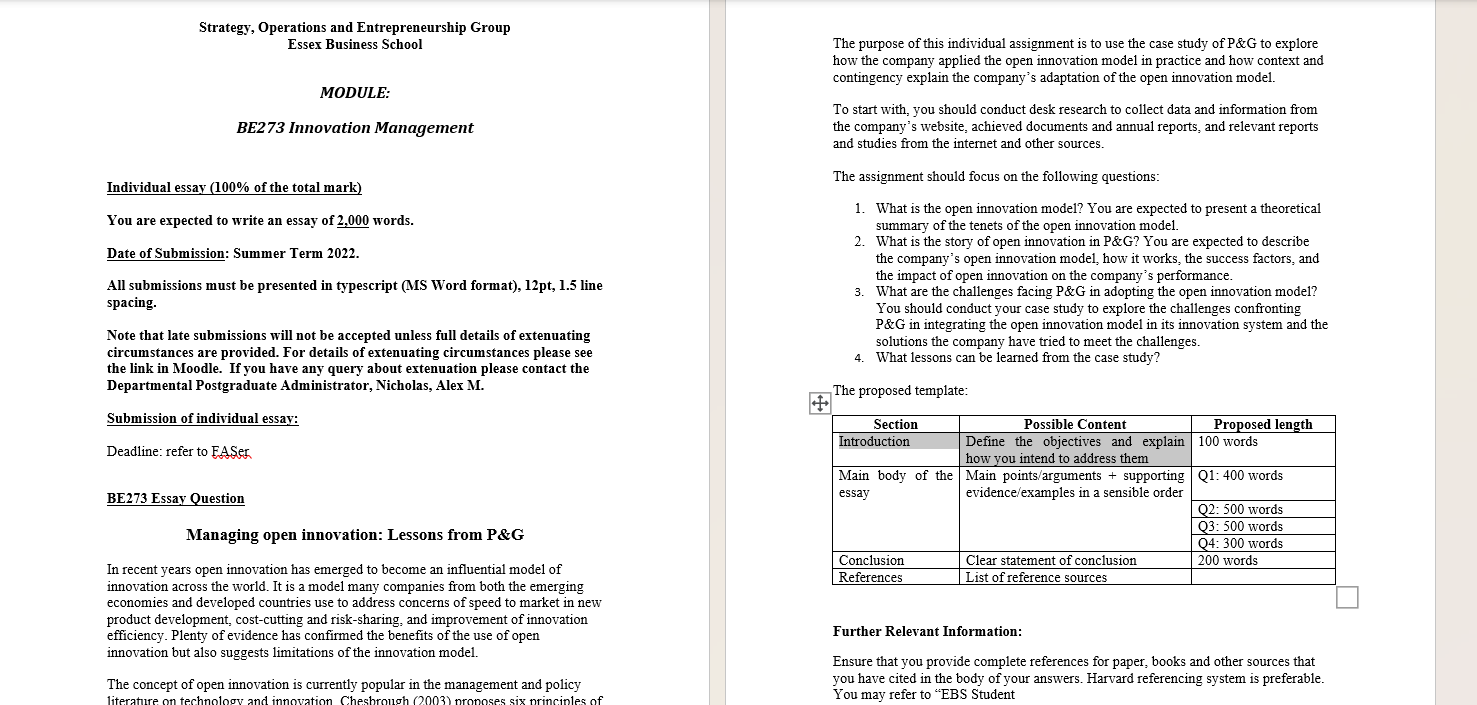Here is sample of BE273 Innovation Management Assignment
Introduction:
Open innovation has emerged to be an influential model of innovation across the world. This model is proof to be used by emerging as well as developing countries to speed up market in new product development, cost cutting and risk sharing and improvement of innovation efficiency. Everest benefits as well as limitations of the innovation model that has been confirmed by much research evidence. This paper will help the learner to understand the open innovation model by providing a case study on P&G (Han,2019).
Meaning of open innovation model:
An open innovation model is a technique for innovation management that incorporates collaboration and promotion with persons and organisations outside of the company. It is also known as a collaborative innovation model. As soon as a business recognises the outstanding professionals and knowledge that exists outside of the organisation, the firm strives to acquire external individuals or organisations by using the technique described above. Corporation-university partnerships, university-industry research chairs, crowd-sourcing contests, and the establishment of an innovation ecosystem are all examples of open innovation strategies that companies have used in their operations. The capacity to generate and utilise information, to develop products and services, to acquire new business models, and to achieve the ultimate business purpose of a firm are all reliant on the ability of the organisation to innovate.
Theoretical summary of the The tenets of the open innovation model:
The following are the tenets of the open innovation model:
Although it is a well-known fact that not all brilliant persons work for the same organisation, there are many smart professionals who work for a range of firms, some of which are direct rivals to their employer. These organisations have been pushed to go beyond their own industry’s business model limits in order to uncover a better leveraging form that can increase the company’s innovation process in order to thrive.

A combination of internal and external research and development may add considerable value to a company’s bottom line by identifying and exploiting new opportunities. According to recent studies, companies who extend their research and development efforts outside their own internal processes have seen great benefits. Engineers and other technical groups are particularly at risk. A shorter product life cycle, cheaper costs, more use of sophisticated innovative technologies, and a greater number of innovation outcomes are all potential benefits of this strategy, among other things (Lei,2020).
Traditional research and development practises are structured in such a manner that the businesses who produce the most and come up with the most innovative ideas are rewarded. A firm with an open imaginative mind, on the other hand, may find that adopting new technology into their current business or licencing it to other companies enables them to create more revenue than they would otherwise be able to make.
Open innovation, as contrast to closed innovation, is a strategy that makes the most of both internal and external ideas to the greatest extent possible. According to this strategy, businesses should use concepts that have already been discovered and proven by others. It is no longer necessary for the components to depend on their own resources to resolve a problem when a therapeutic remedy for the problem is readily available on the market. When a business obtains a diverse range of creative ideas, the company flourishes. Truecaller bration from other sectors is encouraged, and the responsibility of invention is shared. Due to the fact that it only utilises internal as well as external resources from inside the organisation or from other persons, open innovation does not conflict with intellectual property rights. Profitability can only be achieved if the company is capable of managing intellectual property rights and safeguarding the interests of the Cooperative Alliance as a whole (Yun2019).
Open innovation in in P&G:
Every aspect of Procter & Gamble has been reinvented throughout the course of the business’s existence, and the corporation has been on the lookout for novel and creative means to do so. In the firm’s operations, innovation pervades all element of the business; true innovation originates with people, starting with their wants, moving on to their ideas and aspirations that are formed by their passions and then harnessed by the company to propel the organisation ahead. Because of this, P&G thinks that the only constant is change and that disruption will unavoidably occur in the future. Therefore, the firm feels that the most effective method to go ahead is to produce a type of constructive disruption that propels the business forward in order to keep up with changing market circumstances and shifting customer preferences.. According to a recent survey, when it comes to corporations who have successfully adopted the concept of open innovation in the marketplace, P&G is at the vanguard of that group of organisations. According to Fortune magazine, P&G (formerly known as Procter & Gamble Co.) is the world’s 40th biggest company and the 84th most innovative organisation in the history of the organisation.

P&G has built a website for the first time in its history. Using the website, users may network, collaborate, and create in order to spur open innovation, which will benefit the organisation by enhancing employee productivity (Radziwon,2019).
Companies innovation model, how it works, the success factors:
P&G is known for its open innovation model through the use of which the company has achieved success in the market. the company’s innovation model includes the following
With the purpose of orienting university academics toward the production of new high-tech items, Procter & Gamble has chosen to establish strategic relationships with universities. This concept encompasses collaboration between universities. The P&G simulation centre is positioned on a university campus in order to entice final-year students to work with the company on contract projects as part of the firm’s overall recruitment strategy. These students have relevant expertise for certain projects, and the firm takes use of this to recruit them for the position. P&G has also created good working relationships with research institutions and universities in a wide range of countries across the globe, including the United States (Shcherbakov,2021).
A result of the collaboration between P&G E and Inverness Medical, a new company, Swiss precision Diagnostic GmbH, was established as a 50/50 joint venture. As a consequence, P&G was able to join the consumer healthcare sector, allowing the corporation to expand into a new growth area.
TML-Licensing of trademarks: P&G collaborated with the trademark licencing industry to develop Trademark Licensing.
Covergirl eyewear: In collaboration with Marcolin, Covergirl introduced a new line of sunglasses, which contributed to the company’s expansion and success. In the following years, the firm released new products every 2 to 3 months, which resulted in it being the leading women’s eye care brand.
❖ A new technique to attracting children was developed in 2000 via a partnership by P&G and Disney, which included characters that children would find amusing while brushing their teeth (Disney and Oral B phases).
A self-employed innovator, Bounce fabric softener created a new fabric care solution in order to provide fabric software for the garment industry.
With regard to the dryer, P&G licenced R’s patent and incorporated it into the finished product, resulting in Bounce, which was first released to the public in 2008 (Dokukina,2020).
Impact of open innovation on company performance:
In order to boost employee productivity, Procter & Gamble has used open innovation procedures and approaches. As a consequence of its open innovation concept, the company has developed more than 2000 successful open innovation collaborations with innovative partners all around the world since its inception. C+D The website has the potential to provide strategic value to the organisation while also supporting the creation of a series of game-changing consumer improvements for the company. For the second consecutive year, Procter & Gamble (P&G) was named “Big Winner” among the new product pacesetters, owing to the fact that it introduced seven of the top ten most successful recognised food products of the year in 2012. As part of the company’s research and development department, which employs over 8000 people worldwide and has access to more than 2 million researchers, P&G Technology entrepreneurs helped the company locate a “needle in a haystack,” which was then matched to the need of a certain business unit. Approximately 10,000 objects with possible technological applications have been identified by the company up to the year 2006. A dramatic change in intellectual property management inside the organisation was the main aim of the corporation when it implemented the C&D system. After considering the options available, the corporation devised a new strategy, under which the company aspires to accomplish innovation via external cooperation in at least 50% of the situations. It was the company’s realisation that it could earn more money by sharing technology and the world of men with other companies rather than keeping them to itself that spurred the company to change its defensive posture into one of proactivity. P&G has taken a number of initiatives to improve its relationships with each of its partners and to guarantee that the collaboration is a win-win scenario for all of the participants.
Challenges faced by P&G in adopting the open innovation model and the Solution that the company have tried to meet the challenges:
It worked in a highly competitive and naturally occurring global market, and in order to preserve its competitive advantage, the company was always on the hunt for innovative ideas and goods to put into production. In order to reach sales objectives, the company’s innovation rate needed to be increased; also, the company’s research and development (R&D), innovation, and technology development costs were growing at a faster rate than the company’s sales growth. At this point, P&G management made critical choices to shift their research and development (R&D) to commercialization and development (C&D) since the firm has to better link its own innovations and strengthen its relationship to technical advancement outside of P&G.
Successful invention does not happen overnight; it takes time and effort, as well as organisational changes, to be deemed a successful innovator. The efforts taken by Procter & Gamble to address the issues raised by open innovation will be explained in the following poems:
In the selection of appropriate partners, one of the first challenges that the company faced was ensuring that the open innovation process was carried out effectively. Choosing the appropriate partner is a critical stage in ensuring the effective execution of the open innovation process by the company.
For an organisation to be able to forecast and D function in a desired way, it must first establish its needs as well as the environment in which it will be operating.
The organisation need a clearly defined goal in order to prevent spending valuable resources on notions that were useless in terms of obtaining the desired outcome.
Concerning the formation of partnerships, the organisation developed standards and guidelines. A successful idea is sought after by the corporation, which looks for prototypes and technology that can be applied to P&G Technology, marketing, and distribution. The corporation also looks for customer interest in concepts and prototypes that can be applied to P&G Technology, marketing, and distribution.
The company focussed its efforts on three environments: consumer requirements were given the most priority, with the top ten customer demands being picked once a year as the highest priority, and internal requirements were given the least attention. This needs the further development of scientific topics that have already been raised.
New goods and ideas that enable P&G to capitalise on its current market position are included in the category of adjacent products and concepts.
Technology-based board games include: Using these technological game boards, the purpose is to find technology from one area that has the potential to have an impact on goods in other categories. Because of this, it is simpler for the company to assess technology that will enable it to compete on the market.
Lesson learnt from the case study
It is becoming more difficult for non-innovative businesses to maintain a sustainable competitive advantage in the present environment of globalisation and growing competition. Knowledge base assets, as well as the capacity to reorganise current assets, are both critical for an organization’s ability to stay competitive in today’s competitive market. For the purpose of innovation, the supply of information from both internal and external sources is essential, since this component has a significant impact on the growth of an organization’s creative capabilities. It has become vital for organisations to constantly produce new items, services, and business models while also incorporating new technology and know-how in order to keep up with the changing market. Even though firms in industrialised nations have relied on research and development resources to manage innovation for many years, the phenomena of open innovation has evolved as a consequence of changes in the market environment. This is due to the fact that research and development studies only create patterns and technologies and are not capable of developing marketable goods and services. For some years, established countries have started using the concepts of open innovation and the India innovation style of approaching innovation.
Among the many uses of open innovations are cooperative research and development, knowledge transfer, licencing open source software, and information sources that allow the flow of information both outward and inward, among others. Occasionally, the term “open innovation” is used to refer to open inventions that are not yet publicly available.
If you want to get the greatest results or deliver the best service to your customers, it is not enough to have well-formulated criteria. In acknowledgment of this fact, Procter & Gamble created tools to assist them in identifying not just valuable technologies and products, but also technologies that are compatible with their own experience and capabilities. It is said that the organisation has a worldwide network of individuals known as ‘technology entrepreneurs,’ who are dispersed around the world. Those in this category are technology specialists who aid P&G in establishing connections with external innovation sources.
Conclusion:
In order to bring innovative products to market, entrepreneurial start-ups and venture capital organisations, as well as institutions that accelerate and educate students, have become more crucial to businesses throughout the world. In order to improve efficiency and effectiveness, a company’s capacity to go outside its own internal borders of the Research & Development Department, while also feeding the innovation ecosystem, is crucial to its success. If we look at the core idea of open innovation, it is that, in a world where information is plentiful and easily accessible, a firm should not depend only on its own resources for research activities, but should instead seek assistance from a variety of different sources. To be clear, the term “open innovation” refers to any of the myriad methods in which a company might innovate, including the use of tools and platforms that allow organisations to access resources that are not owned or controlled by them.
References
Dokukina, A. and Petrovskaya, I., 2020. Open Innovation as a Business Performance Accelerator: Challenges and Opportunities for the Firms’ Competitive Strategy. In Proceeding of the International Science and Technology Conference” FarEastСon 2019″ (pp. 275-286). Springer, Singapore.
Han, C., Thomas, S., Yang, M. and Cui, Y., 2019. The ups and downs of open innovation efficiency: the case of Procter & Gamble. European Journal of Innovation Management.
Lei, Y. and Haibing, L., 2022. Evolution of open innovation paths from the perspective of innovation situation. Science Research Management, 43(2), p.9.
Qureshi, M.I., Parveen, S., Abdullah, I. and Dana, L.P., 2021. Reconceptualizing the interventions of open innovation systems between the nexus of quadruple organization cultural dynamics and performance. Quality & Quantity, 55(5), pp.1661-1681.
Radziwon, A. and Bogers, M., 2019. Open innovation in SMEs: Exploring inter-organizational relationships in an ecosystem. Technological Forecasting and Social Change, 146, pp.573-587.
Shcherbakov, V. and Silkina, G., 2021. Supply chain management open innovation: Virtual integration in the network logistics system. Journal of Open Innovation: Technology, Market, and Complexity, 7(1), p.54.
Yun, J.J. and Liu, Z., 2019. Micro-and macro-dynamics of open innovation with a quadruple-helix model. Sustainability, 11(12), p.3301.
Know more about UniqueSubmission’s other writing services:


